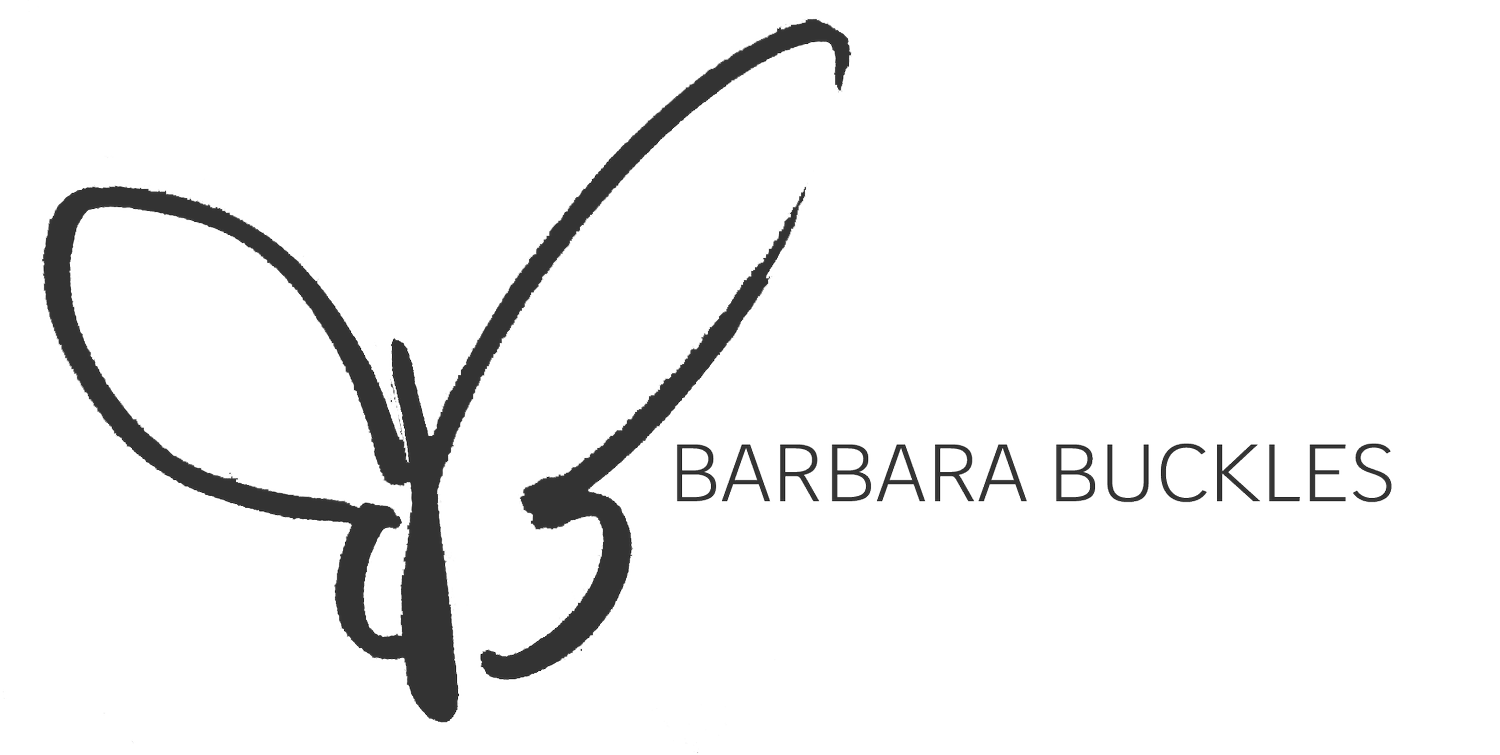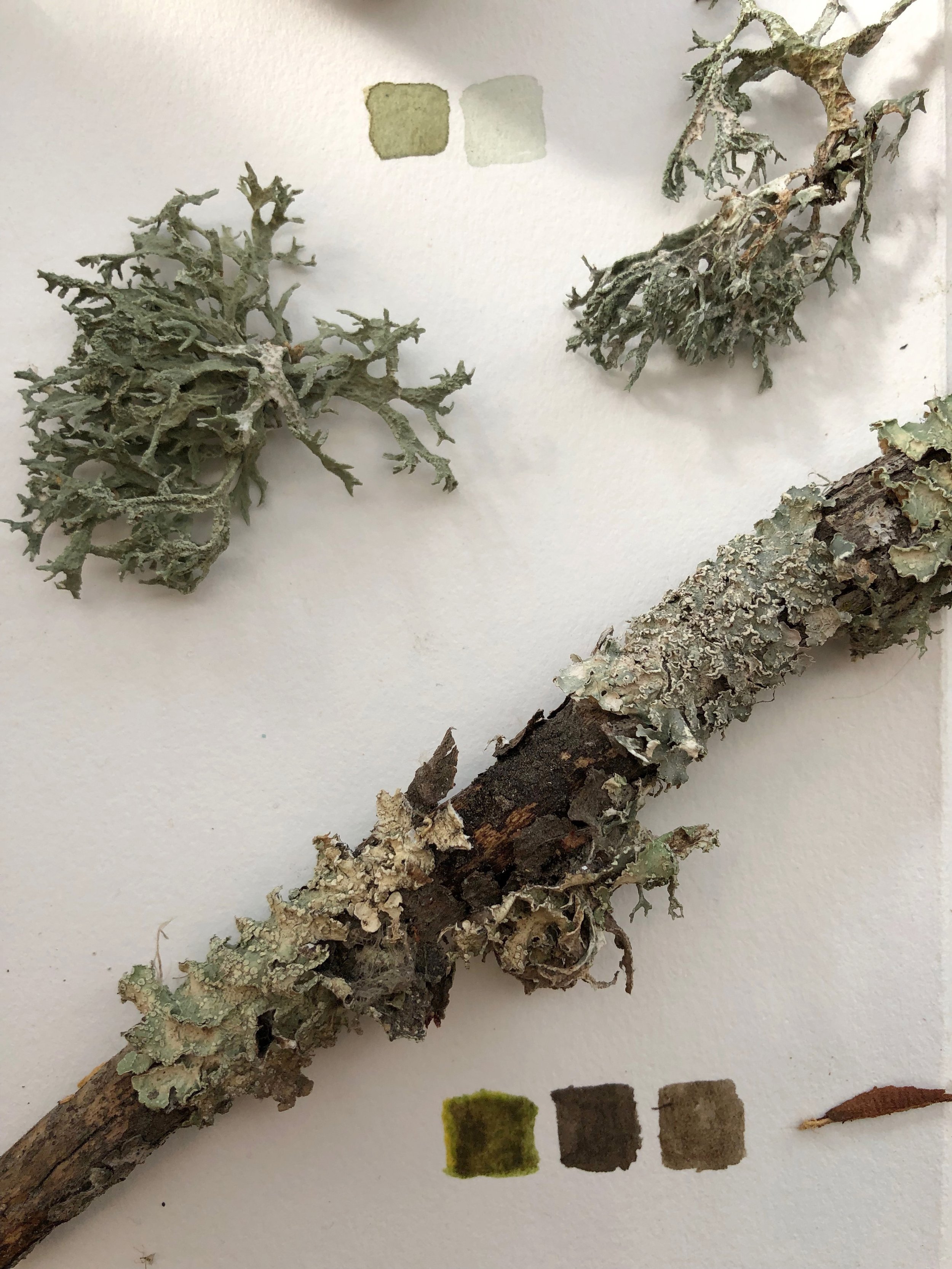Barbara Buckles, inveterate dabbler here.
Writing, photography, book arts, painting, collage, encaustic, mixed media. . .you name it, and chances are I’ve dabbled in it. Most recently I’ve been taking my script — my gestures — to new heights. Using my strokes as the basis for my artwork has pretty much vanquished that empty feeling I used to get when facing a blank canvas or page. If nothing else, I dip a pen or pick up a pencil and just start writing, making marks, letting my mood set the tone.
Sometimes I opt for a lyric, sometimes I focus on a word or phrase that expresses how I'm feeling, sometimes I use "asemic" or filler text. And yep, sometimes I cuss like a sailor. Whatever I write, it's very often illegible, not meant to be read, although something might appear subliminally.
Now I make my own pens and tools, cobbled together with tape and spit. They’re imperfect. . .which makes them perfect for spontaneity and expression.
For over 25 years, I have both taught and, as Make Art in L.A., hosted creative workshops led by top-notch instructors. From the time I almost accidentally discovered I had “an eye” for photography, I have been making art a part of my everyday life.
ART IS GOOD FOR US!
Neuroarts — the scientific study of arts and aesthetic experience and their effects on our brains, bodies, and behavior — show us that art can change and even heal us. There is art to be found not only in museums, galleries, stages, and opera houses but in the way we cook, dress, apply makeup, decorate our house, and see the outside world.
Most of us view art made by others and assume it’s the province of special individuals we can only admire. Although learning the basics is definitely helpful, most artists started making art simply because they had to. They had an urge, and they followed it. The good news is that the very same urge resides in most of us.
Make “making art” a part of your everyday life:
Visit an art supply store — Buy one or two things that call to you, then play with them to explore their possibilities, then go online to learn how others use them.
Take a workshop, online or in person - Pick a subject and Google it followed by the word workshop. Voilá — a new world opens up that you may not have known existed. You’ll never be the same!
Take photos - Use your smart phone to take photos of whatever pleases your eye. Take one photo just to capture it, then take a few more with framing and focus in mind. Get closer! Closer!
Keep an art journal — Just doodle, sketch, or cut and paste images or words that speak to you. One of my favorite things to do is make little color palettes, just swatches of color echoing what I’m looking at, be it a face, a still life, scenery, whatever. Use watercolors, colored pencils, crayons, whatever feels comfortable.
Once you’ve opened to the concept of making art an everyday part of your life, I promise you’ll see things differently. In whatever you look at, you’ll notice light and shadow, color combinations, and maybe even find yourself framing what you see, what you make, and how you feel.
Now you’re hooked — I hope you’ll join me in making art every day!
In literary, poetic, Zen, and philosophical terms, the only way out is through. Art can take us through, whether we’re looking at it, or making it.
"may i be i is the only prayer" (e.e. cummings)
In praise of cursive:
Whether loops and curlicues
And graceful connectors
Or slashed scrawl
At an uneven tempo
It’s fluid language
With flourishes uniquely our own
As personal as our signature
HANDWRITING MANIFESTO: Eight good reasons to recognize and extend the role of handwriting in the set of literacy skills that all citizens need to function in the modern world. (Please click here to read and sign.)



